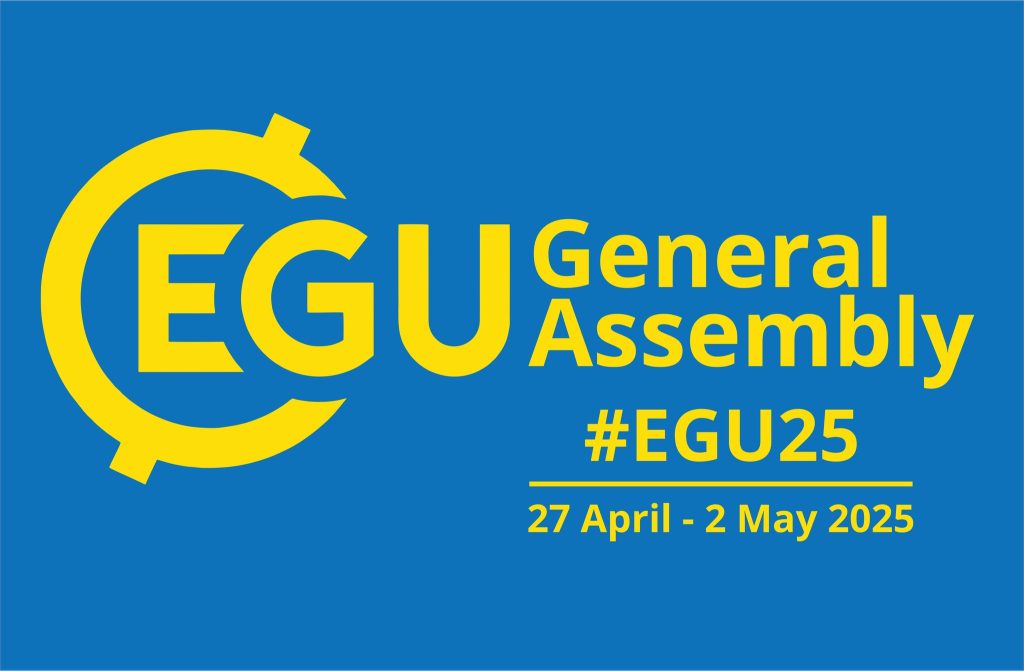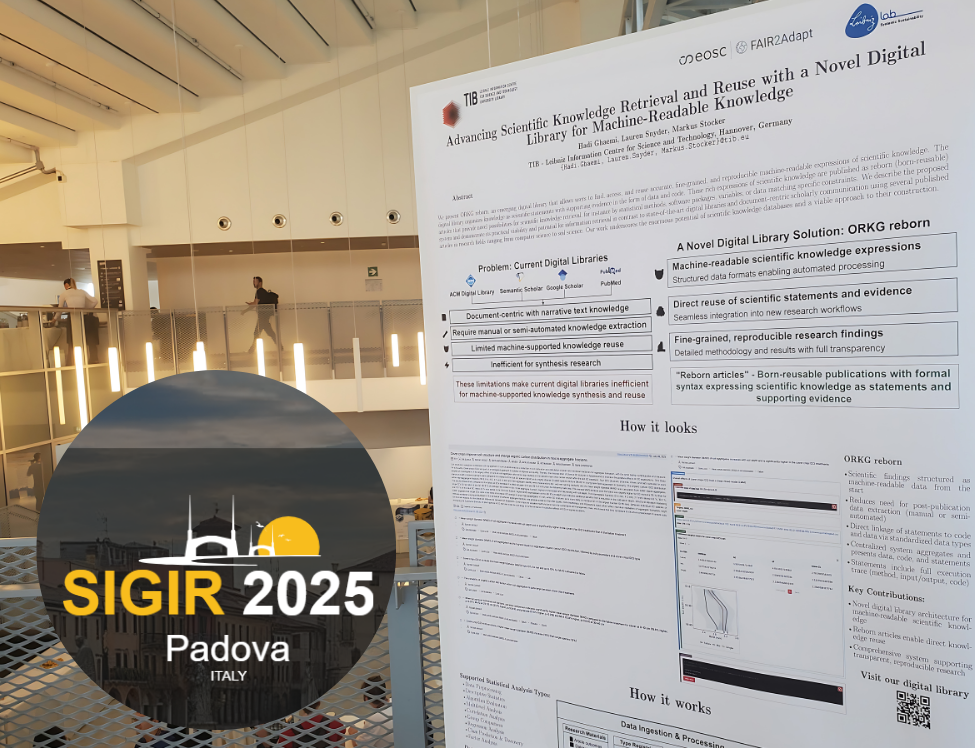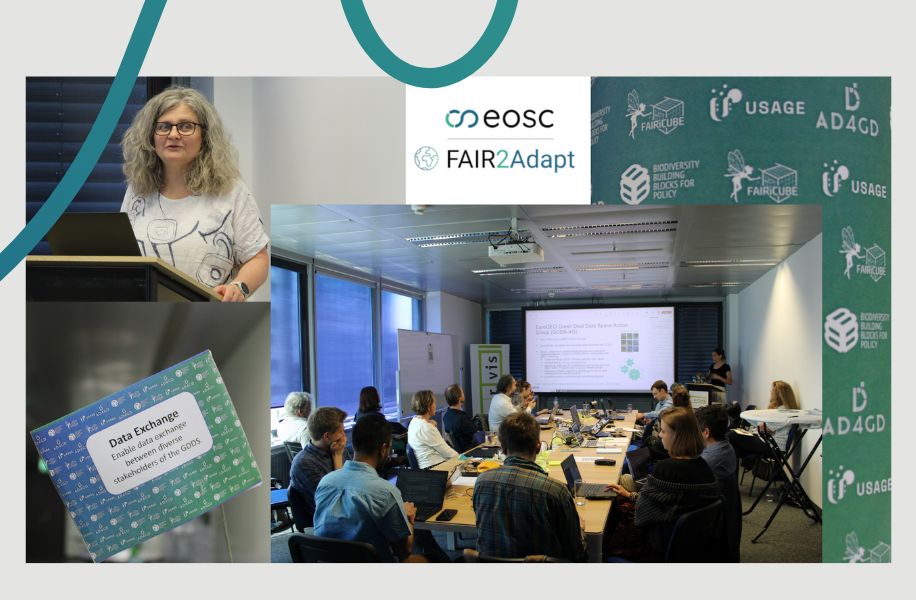The European Geosciences Union (EGU) General Assembly 2025 marked a significant milestone for FAIR2Adapt, as we engaged with diverse communities, showcased our work, and deepened collaborations around advancing climate change adaptation through FAIR (Findable, Accessible, Interoperable, and Reusable) and Open Science.
🌍 Understanding Climate Change Adaptation as a Complex, Collaborative Endeavour
FAIR2Adapt approaches climate change adaptation as a challenge that transcends disciplines and sectors. Adaptation requires not just scientific excellence, but also effective mechanisms to make research outputs actionable for stakeholders, from policymakers to local communities. At EGU, we had the opportunity to:
- Introduce FAIR2Adapt to the Earth and environmental science communities
- Discuss our FAIRification framework and how it supports stakeholder-driven adaptation strategies
- Highlight the importance of interdisciplinary research infrastructures, such as EOSC and Data Terra, for fostering data reusability and cross-community collaboration
🔍 Engaging with ESA-EarthCODE: Open Science in Action
A major highlight was our exchange with the ESA EarthCODE team, a pioneering initiative offering a Collaborative Open Development Environment to embed Open Science and FAIR principles directly into Earth system science workflows.
Their metadata GUI—a user interface designed to help scientists publish STAC Items (SpatioTemporal Asset Catalog records) into the ESA EarthCODE Science Catalog—is a promising step forward. It allows researchers to make data and workflows openly available in a seamless, user-friendly way.
This aligns strongly with FAIR2Adapt’s objectives of empowering climate researchers to document, publish, and share their knowledge assets effectively, not only to support reproducibility but to accelerate adaptation planning across domains.
📦 One decade of FAIR Principles: Data Reusability and Impact in Earth System Sciences
Marking ten years since the introduction of the FAIR principles, this session brought together a vibrant community of Earth system scientists, data stewards, and infrastructure developers to reflect on progress, persistent challenges, and new directions for enabling Findable, Accessible, Interoperable, and Reusable data. Through a rich series of presentations and posters, participants explored how FAIR data implementation has matured—from field campaign data lifecycles and soil vocabularies, to the automatic annotation of variables using the I-ADOPT framework. Diverse examples showcased innovations in metadata tooling, domain repositories, and community platforms like EarthBank, highlighting the essential role of interdisciplinary coordination across global initiatives. Case studies on seismology, chemical risk assessment, climate modelling, and the IPCC AR6/AR7 workflows underscored both technical and social dimensions of FAIR adoption. Notably, several contributions addressed FAIRness in climate change adaptation, culminating in a discussion of virtual research environments (VREs) aligned with the European Open Science Cloud (EOSC) to serve climate adaptation communities. The session underscored the urgent need for sustained community engagement, co-design of infrastructures, and harmonized policies to bridge the gap between FAIR policy and FAIR practice in Earth sciences.
🧩 Linking with DKRZ and FAIRCORE4EOSC: Towards Machine-Actionable Climate Data
In another important session, we discussed with colleagues from DKRZ (German Climate Computing Centre) and the FAIRCORE4EOSC project, who demonstrated how FAIR Digital Objects (FDOs) and the Data Type Registry (DTR) can support machine-actionable climate data.
The integration of services such as:
RAiD (Research Activity Identifier) for tracing research context,
PIDGraph for connecting persistent identifiers across data objects and activities, and
DTR for defining and registering data types
is showing real potential for increasing data traceability, reusability, and cross-platform interoperability—all key to strengthening the foundation of evidence-based adaptation planning.
We see great opportunity to extend this work to STAC-based climate data assets, supporting their FAIRification and integration into broader European data spaces.
🌐 Dialogue with Data Terra and EOSC Nodes: Interoperability Starts with Community – FAIR-Ease as a catalyst
FAIR2Adapt joined discussions with FAIR-EASE, Data Terra, and national/thematic EOSC nodes about how the Galaxy platform for Environmental Data Science can support climate communities in navigating and contributing to the European Open Science Cloud (EOSC). Shared goals include:
Promoting cross-infrastructure discoverability of climate data and knowledge
Harmonizing metadata approaches for both science and policy use
Supporting the reuse of scientific workflows and models in operational adaptation settings
These discussions confirmed the urgency of working across scientific infrastructures to unify approaches and reduce fragmentation for data providers and users alike.
🚀 Seamless transitioning between HPC and cloud in support of Earth Observation, Earth Modeling and community-driven Geoscience (PANGEO)
This session showcased how the Pangeo ecosystem is empowering geoscientists to build scalable, FAIR-aligned workflows across both HPC and cloud environments. Key highlights included:
DGGS: Discrete Global Grid Systems—particularly HEALPix grids—facilitate data fusion by making it easier to colocate diverse datasets within a common spatial framework. Regridding is a critical step, and significant progress has been made in developing user-friendly tools to support this.
EOPF Zarr: Designed for cloud-optimized access to Earth Observation data, EOPF Zarr enables chunked, parallel I/O, supporting scalable and reproducible data pipelines.
xpublish: A lightweight tool for serving xarray datasets via APIs, allowing researchers to publish data directly from memory or disk—ideal for sharing analysis-ready, FAIR-compliant datasets.
These tools align closely with FAIR2Adapt’s mission: enabling modular, interoperable workflows and exposing data in formats suitable for both human interpretation and machine action. They exemplify the power of open standards and community-led development in bridging platforms, disciplines, and infrastructure types.
💡 Key Takeaways
FAIR2Adapt is still in its early stages—we officially started in January 2025—but EGU25 offered a powerful platform to amplify our mission, listen to community needs, and build partnerships.
The journey toward actionable climate knowledge must be rooted in collaboration, trust, and open tools.
Rather than reinventing the wheel, we can reuse existing services and platforms developed and maintained by established Research Infrastructures and initiatives such as DestinE. In return, our FAIRification framework can increase their visibility and facilitate access to their data, tools, and platforms for climate change adaptation communities.
Open Science ecosystems like EarthCODE, machine-actionable services like DTR/RAiD/PIDGraph, and community-driven platforms like EOSC and Data Terra are critical enablers of success.
We are energised by the engagement at EGU25 and grateful for the momentum built. The FAIR2Adapt team is committed to continuing this collaborative work—because climate change adaptation needs both science and action.




